Larke Peak Climbing Difficulty
Larkya Peak is considered a challenging climb, requiring basic mountaineering skills such as the use of crampons, ice axe, and ropes. It is best suited for experienced climbers with previous high-altitude climbing experience. The difficulty of the climb varies depending on factors such as weather conditions, route conditions, and individual fitness levels.
Some these are important factors that add to the difficulty level of climbing Larkya Peak such as:
Altitude: Larkya Peak has an elevation of 6,249 meters (20,505 feet) above sea level. Climbers must acclimatize properly to avoid altitude sickness and other high-altitude-related issues.
Technical Terrain: The climb to Larkya Peak involves technical climbing skills, including the use of ropes, crampons, and ice axes. Climbers should be skillful in these techniques.
Weather Conditions: Weather in the Himalayas can be unpredictable, with conditions changing rapidly. Climbers must be prepared for extreme cold, high winds, and snowfall.
Physical Fitness: Climbing Larkya Peak requires a high level of physical fitness and stamina. Climbers should be able to hike for several hours a day at high altitudes while carrying a heavy pack.
Remote Location: Larkya Peak is located in a remote area of Nepal, far from medical facilities and other amenities. Climbers must be prepared to be self-sufficient and handle emergencies.
Route Finding: The route to Larkya Peak may require good route-finding skills, especially in areas with complex glacier systems or challenging navigation.
Acclimatization to reduce the Altitude Sickness for the Trip
An acclimatization day is necessary during the 16-day Larke Peak climbing with Manaslu Circuit Trek because it is need to reaching 6,249 meters. The trek starts at 750 meters at Soti Khola and gradually climbs to Larke Peak Base Camp at 5,100 meters, passing through villages, forests, and other high-altitude places. As you ascend, oxygen levels and air pressure decrease compared to sea level. Once you reach an altitude above 3,500 meters, you may experience symptoms of altitude sickness, such as nausea, vomiting, diarrhea, headaches, loss of appetite, tiredness, dizziness, and sleeplessness.
When ascending to 3,500 meters, be honest with your guide about how you are feeling. Your guide will advise you to walk slowly and may suggest sleeping at a lower altitude before ascending further.
Samagaun is designated as our acclimatization rest day in the Larke Peak Climbing itinerary. This rest day and gradual ascent help prevent altitude sickness and allow you to adapt to the environment. If you experience any symptoms of altitude sickness during the Larke Peak climb and Manaslu Circuit Trek, it is important to address them immediately to avoid complications. To prevent these issues, follow your guide's instructions, as they are knowledgeable about high-altitude sickness. This process, known as acclimatization, helps reduce the risk of altitude sickness.
To prevent altitude sickness, you should follow the itinerary closely, as proper acclimatization helps your body adapt to higher elevations. Additionally, stay hydrated by drinking plenty of water, eat a well-balanced diet with sufficient carbohydrates, maintain a comfortable pace, and avoid alcohol and sedatives. By adhering to these guidelines, you can reduce the risk of altitude sickness and have a safer and more enjoyable trek on the Larke Peak climbing and Manaslu Circuit Trekking. However, if you continue to feel unwell despite following these recommendations, you should return to a lower altitude.
About Diamox — a medicine for high altitude sickness
Diamox is the brand name for Acetazolamide, a medicine that helps prevent and treat altitude sickness (Acute Mountain Sickness, AMS). When trekkers ascend to higher elevations, oxygen levels decrease. Taking Diamox helps your body adjust faster to high altitudes by stimulating deeper and faster breathing, allowing you to take in more oxygen. Diamox works by making your blood more acidic, which signals your body to breathe faster at high elevations. This helps reduce symptoms such as headaches, nausea, and dizziness.
Based on our experience and advice from our altitude doctor, if trekkers have previous high-altitude trekking experience (around 4,000 to 5,000 meters) in Nepal, there is usually no need to take Diamox. However, if trekkers are trekking at these altitudes for the first time, it is recommended to start taking half a tablet of Diamox from the first day of the hike.
For example, all trekking route in Nepal, where the maximum elevation is 4,500 to 5500 meters, it is advisable to start taking Diamox from the first day of the trek. After taking Diamox, some people may experience side effects such as tingling sensations in the skin. Therefore, it is important to drink at least 4 liters of water per day while trekking and taking Diamox.
Important Notes
- Diamox is not a cure — it just helps prevent or lessen AMS.
- Stay hydrated — Diamox acts as a diuretic (you'll pee more!).
- Common side effects: Tingling in fingers, frequent urination, and slight taste changes.
- Always ascend slowly, even with Diamox.
- Never use Diamox as an excuse to climb too fast!
Requires Permits for Larkya Peak Climbing
Climbing Larkya Peak requires a climbing permit issued by the Nepal Mountaineering Association (NMA), as well as trekking permits for the Manaslu Conservation Area (MCAP), Annapurna Conservation Area (ACAP), and Manaslu Restricted Region.
Trekking to Larkya Peak climbing without the required permits is not recommended and is against the regulations set by the Nepalese government. Permits are necessary for climbing any peak in Nepal, including Larkya Peak, to ensure safety and environmental conservation.
Attempting to trek to Larkya Peak without the necessary permits can result in fines, legal issues, and difficulties with local authorities. It's important to follow the regulations and obtain the required permits before starting on any trekking or climbing expedition in Nepal.
Requiring permits for Larke Peak Climbing are given below:-
Manaslu Restricted Area (RAP) Permit
- It cost: USD 75 per person for the first seven days and an additional USD 10 each day from December for all nationality
- It cost: USD 100 for the first seven days and an additional USD 15 each day from September to November for all nationality
Manaslu Conservation Area Project (MCAP) Permit
- It Cost: US$ 30 per person, per trek for all foreigners
- It Cost: US$ 10 per person for SAARC (South Asian Association for Regional Cooperation) citizens
Annapurna Conservation Area Project (ACAP) Permit
- It Cost: US$ 30 per person, per trek for all foreigners
- It Cost: US$ 10 per person for SAARC (South Asian Association for Regional Cooperation) citizens
Chum Nubri Rural Municipality Entrance fees:
- Cost:NPR 1,000 for foreign visitors and NPR 200 for local travelers per person.
Larke Peak Climbing Permits:
- It Cost: US$ 125 per person for December, January, February, June, July, and August
- It Cost: US$ 175 per person for September, October, and November
- It Cost: US$ 300 per person for March, April, and May
Best Season for Larkya Peak Climbing:
The best season for climbing Larkya Peak is during the pre-monsoon (spring) season from March to May and the post-monsoon (autumn) season from late September to November. These seasons offer the most stable weather conditions and the clearest skies, providing most favorable climbing conditions.
During the spring season, the weather is generally mild, and the days are longer, allowing for more daylight hours for climbing. The post-monsoon season offers similar conditions, with clear skies and stable weather, making it an excellent time for climbing.
Both seasons also offer beautiful views of the surrounding Himalayan peaks, including Manaslu, Himalchuli, and Cheo Himal, enhancing the overall climbing experience. It's important to note that while these seasons are considered the best for climbing Larkya Peak, weather conditions in the Himalayas can be unpredictable, so it's essential to be prepared for changing conditions.
Accommodations for Larkya Peak Climbing
During a Larkya Peak climbing expedition, accommodation is typically in teahouses or camping. Here's what you can expect: a teahouse trek to Larke Phedi, with three nights at Larkya Peak Base Camp recommended
Teahouses: Along the trekking route to Larkya Peak Base Camp, there are teahouses that provide basic accommodation and meals. These teahouses usually have dormitory-style rooms with shared bathrooms. The facilities are basic but provide a comfortable place to rest and recharge.
Camping: As you move closer to Larkya Peak Base Camp, you'll likely stay in tents. We (High Pass Adventure) will provide camping equipment, including tents, sleeping bags, and mattresses. Camping allows for a more remote and adventurous experience, but it also requires more preparation and organization.
Larkya Peak Base Camp: At Larkya Peak Base Camp, you'll stay in a tented camp set up by us (High Pass Adventure). The base camp is usually situated near the moraine of a glacier, providing a temporary home as you acclimatize and prepare for the summit push. This camp also serves as a closer starting point for the summit attempt.
Cost for Larke Peak Climbing
The cost for Larke Peak Climbing is USD 2,450 per person, based on a minimum of two participants and combined with the Manaslu Circuit Trek. However, this cost may vary depending on several factors such as the trekking season, the agency you choose, the starting and ending points of the trek, the trek duration, group size, and level of service.
Our Larke Peak Climbing with Manaslu Circuit Trek itinerary is 16 days from Kathmandu to Kathmandu. However, you will need a total of 19 days, including your arrival and departure in Nepal. For this 19-day itinerary, the cost includes transportation, accommodation, meals, trekking and climbing guide, climbing equipment, tented camps, required porters, and all necessary permits for both Larke Peak Climbing and the Manaslu Circuit Trek.
However, the costs do not include emergency evacuation, all types of drinks, snacks, personal trekking and climbing gears and extra luxury services. It is recommended to obtain detailed quotations from several reputable trekking agencies to compare and choose the best option that suits your needs and budget. We guarantee to provide reasonable costs and high-quality service for Larke Peak Climbing with Manaslu Circuit Trek within the above range. Additionally, we offer competitive and transparent pricing with no hidden costs, ensuring you get the best value for your money. Our packages include all essential services, making your planning and budgeting straightforward and hassle-free.
Hire a experienced Climbing Guide for Larke Peak Climb
Larke Peak is situated at 6,249 meters in the remote Manaslu region and is less frequently climbed. The climbing route is challenging to find due to its limited use, making it essential to hire an experienced climbing guide. The route to Larke Peak Base Camp involves navigating dense forests and alpine terrain at higher elevations. Finding the right path can be mentally challenging and make the journey more demanding. An experienced guide will help ensure you stay on track and manage the trek and climb safely. A guide is invaluable for ensuring you reach your destination successfully and with minimal stress, assisting with navigation and supporting you every step of the way.
To safely fix the rope and ensure a successful ascent, a minimum of two experienced climbing guides is essential—this is necessary even if there is only one climber. Without adequate guiding support, summiting Larke Peak becomes extremely difficult, if not impossible.
At Larke Peak Base Camp, suitable camping areas are limited, so it is crucial to identify and establish a safe and reliable campsite—something that only an experienced climbing guide can efficiently manage. An experienced guide is also essential for finding the correct climbing route and ensuring a safe and successful ascent of Larke Peak.
With years of experience leading climbs on Larke Peak, we are proud to report a 70% success rate among our climbers. With the right preparation and support team, including two skilled climbing guides, your summit attempt has a strong chance of success.
In addition to route navigation and climbing assistance, the guide will explain the local culture and natural surroundings, facilitate interactions with local people, and ensure a stress-free journey. They will also manage accommodation, food, transportation, and permits throughout the trip, and provide assistance in any situation. Our team of experienced and professional guides is dedicated to making your trek as comfortable and stress-free as possible, with full responsibility, care, honesty, and kindness.
Communication in the Larke Peak Climbing
Good mobile phone coverage is available along some of the trek route, particularly in more developed areas till Samdo Village. However, coverage can be irregular or non-existent in more remote sections, especially at higher altitudes like Dharmasala (Larke Phedi) and Leake Peak Base Camp. So, you can buy a local SIM card (Ncell or Nepal Telecom) in Kathmandu, which will provide coverage in many areas along the trekking route, though data speed and reliability may vary. If you do not have a Nepali SIM card, our Nepali guide will help you contact your family and update the head office about the trek.
Internet services are available in many lodges along the entire Larke Peak Climbing except Dharmasala and Larke Peak Base Camp. Teahouses and lodges provide internet access along the route for an extra charge. Electric power sources are available in lodges, but they charge extra, so battery life can be a concern. Carry a portable power bank to keep your devices charged is highly recommended for Larke Peak Climbing.
Tipping information
The trekking and climbing guide, as well as the porter, is essential to the success of the trip, ensuring that it is completed smoothly and without issues. Tipping is an important aspect of trekking in Nepal, as it acknowledges and appreciates the hard work of the local staff who assist you throughout your journey. It is customary to tip at the end of the trek, and you should gather all team members (guide, porter, assistant guide) together to distribute the tip. Tips are generally given in cash, preferably in US dollars or Nepalese rupees, and it is best to use small denominations to facilitate easier distribution
While the typical guideline is to tip around 10% of the total payable amount, you can adjust this based on the quality of service provided. Recommended tipping amounts are as follows:
- Guide: $12-$15 per day
- Porter: $8-$10 per day
- Assistant Guide: $8-$12 per day
- Climbing Guide: $ 200 (whole trip)
These tips are highly recommended to motivate the team and reward them for their outstanding service, contributing to a memorable and inspiring experience.
Trekking and climbing equipment for Larke Peak Climbing
Travel equipment is essential to pack before your trip. Below is the recommended packing list. We understand it may seem like a lot to carry from home, so we suggest packing light and bringing only the necessary items. If you’re missing something, you can hire or buy it in Kathmandu, especially around Thamel.
These general items are suitable for all seasons while trekking in Nepal, but the list may vary depending on the season and the duration of your chosen trek. Therefore, it’s important to ask your trekking organizer for a detailed packing list specific to your trek. They will provide you with clear information about what to bring.
Trekking and climbing equipment for Larkya Peak climbing are varying depending on the specific itinerary and the time of year you plan to climb.
Here is a general list of essential equipment:
Clothing:
- Insulated jacket
- Sleeping bag (rated for cold temperatures)
- Sleeping pad
- Fleece jacket or pullover
- Waterproof jacket and pants
- Trekking pants
- Thermal base layers
- Moisture-wicking t-shirts
- Warm hat and gloves
- Sun hat and sunglasses
- hiking boots
- Socks (wool or synthetic)
Climbing Gear:
- Mountaineering boots
- Crampons
- Ice axe
- Climbing harness
- Climbing helmet
- Locking carabineers
- Trekking poles
Other Essentials:
- Daypack
- Water bottles or hydration system
- Water purification tablets or filter
- Snacks and high-energy foods
- Sunscreen and lip balm
- First aid kit
- Personal hygiene items
- Map and compass or GPS
It's essential to pack light but ensure you have all the necessary gear for safety and comfort. The weather in the Himalayas can be unpredictable, so it's important to be prepared for various conditions. It's also recommended to consult with a reputable trekking agency and trek with an experienced guide. Guides can provide guidance on the specific gear you'll need for your expedition.




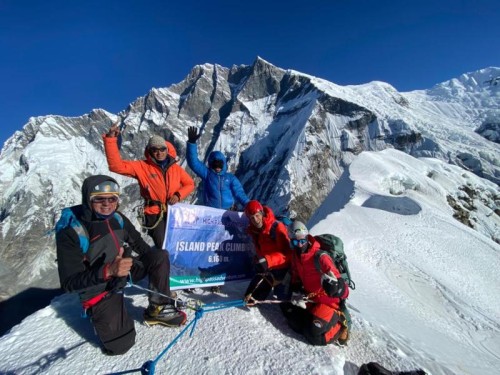


 USD 2250
USD 2250

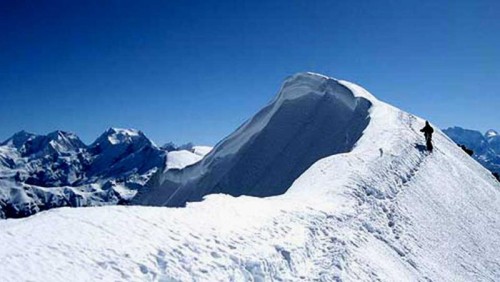
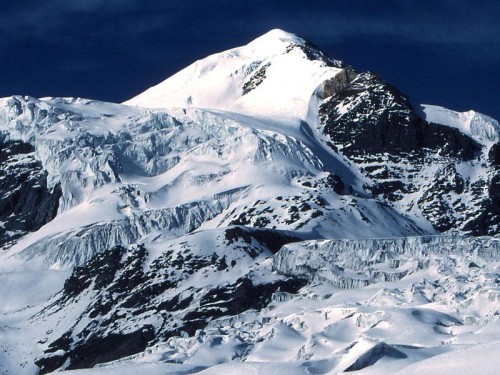
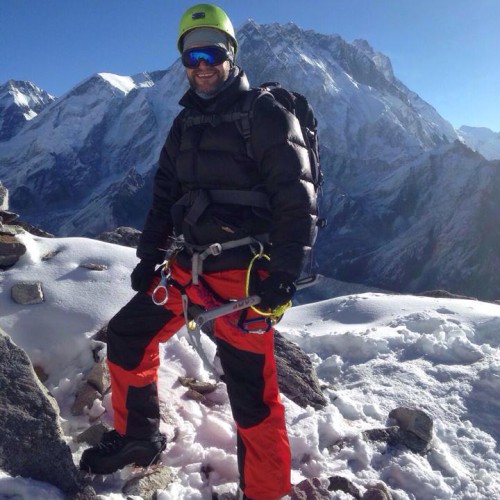

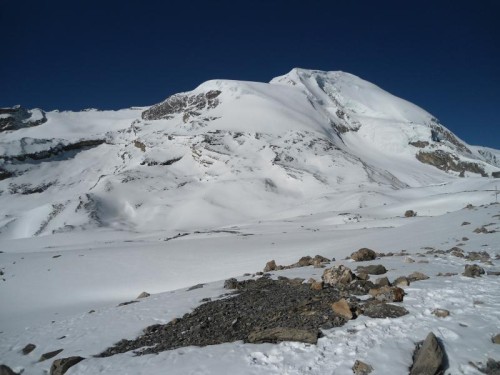
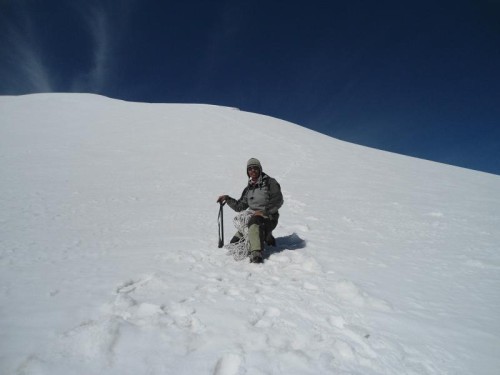
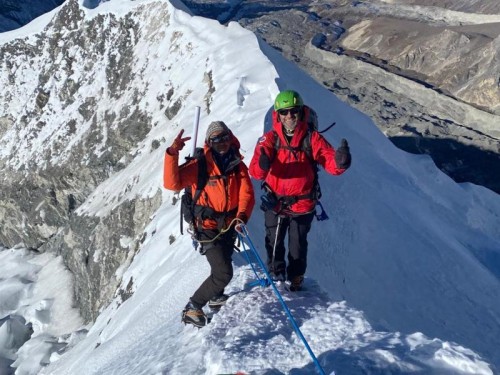

Robert Mikovec
Czech Republic
Get involved again Larke Peak Climbing
7th August, 2024
This adventure on the Manaslu Circuit Trek with Larke Peak climbing in April 2024 was truly amazing. The team from High Pass Adventure was experienced and very professional. The trip was much better than expected, offering great value for money while being comfortable and safe. The team was very friendly. I will definitely come back for another trek with peak climbing with them.